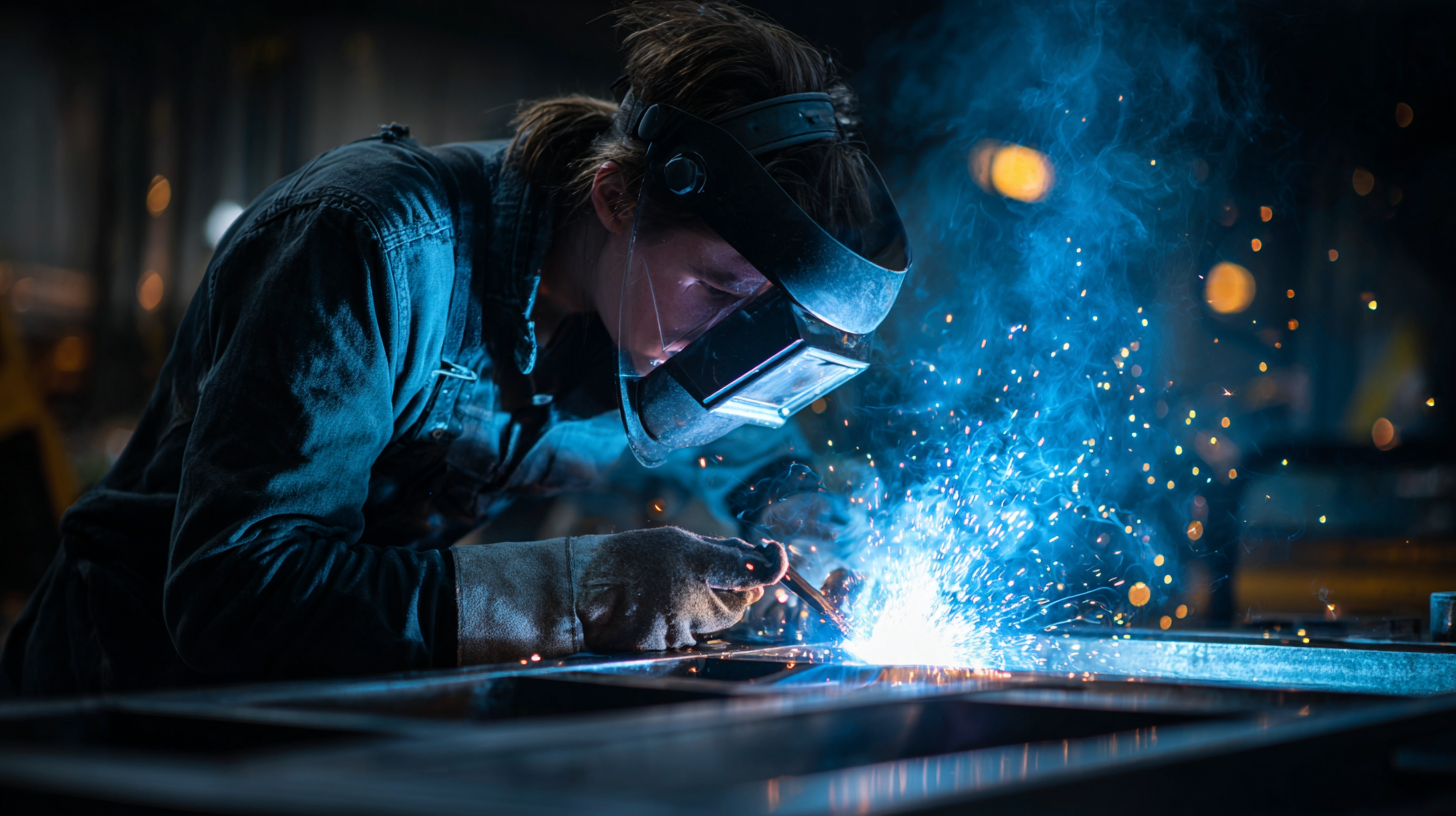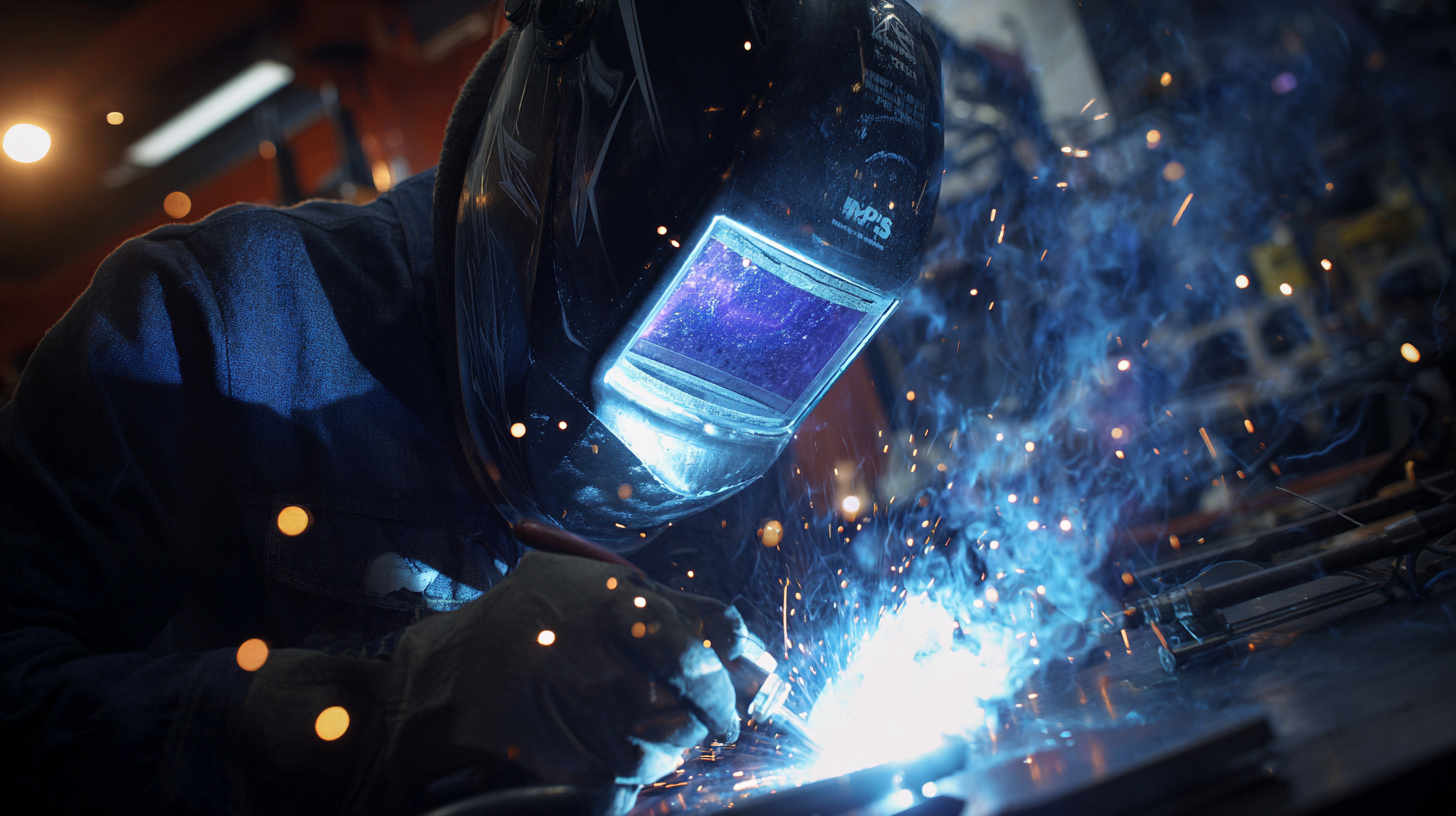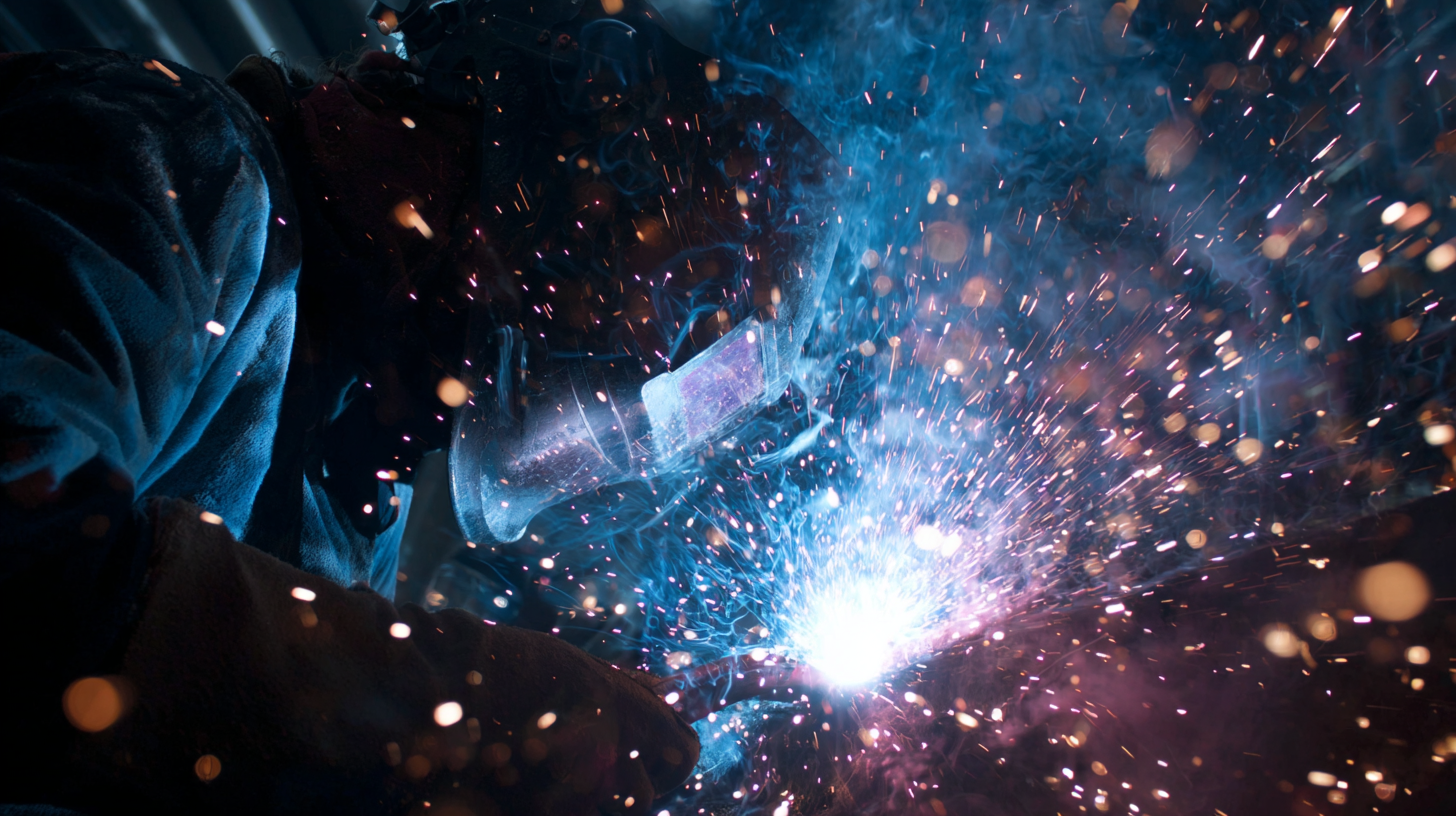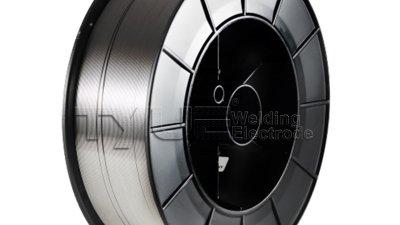Understanding Flux Welding: Techniques, Benefits, and Applications Explained
Table of Contents
- Key Flux Welding Techniques for Every Metalworker
- The Advantages of Flux Welding: Why Choose This Method?
- Common Applications of Flux Welding in Various Industries
- Understanding the Equipment Required for Effective Flux Welding
- Best Practices for Safety in Flux Welding Operations
- Troubleshooting Common Issues in Flux Welding Projects
- Maximizing Welding Efficiency: An In-Depth Analysis of E71T-11 Flux-Cored Electrodes in Industrial Applications
- FAQS
- Conclusion
- Related Posts
So, flux welding is a pretty essential technique out there in the welding world. It's caught a lot of attention, mainly because it’s so versatile and really good at joining different kinds of metals. In this blog, we’re gonna dive into what flux welding is all about—covering how it’s done, the perks of using it, and the various ways it’s used across different industries. With more than 22 years under our belt in making top-notch welding electrodes and consumables, Wenzhou Tianyu Electronic Co., Ltd. has built a solid reputation since we started back in 2000. Our main products—like stainless steel, carbon steel, and low alloy welding electrodes—are crafted to meet what pros in the field need. By getting the hang of flux welding with us, you'll pick up some really useful insights to boost your welding game and get better results on your projects. So, stick around as we break down the basics of flux welding and why it's such a game-changer in today’s welding scene.

Key Flux Welding Techniques for Every Metalworker
Flux welding is such a crucial skill for anyone who works with metals. There are a ton of different techniques out there, each suited for different materials and project needs. One of the most common methods you'll hear about is gas metal arc welding, or GMAW—better known as MIG welding. It’s pretty popular because it uses a continuous wire electrode and a shielding gas to keep the weld area protected from contamination. Because of its versatility, MIG welding is a go-to for working with all sorts of metals, like aluminum or stainless steel. Honestly, it’s pretty much a must-have in every metalworker’s toolkit.

Another key technique you’ll come across is flux-cored arc welding, or FCAW. It’s kind of similar to MIG but uses a tubular wire filled with flux, which gives an extra layer of protection against oxidation. This is especially handy for outdoor welding where wind and other stuff can throw off your welds. And let’s not forget about TIG welding (that’s Tungsten Inert Gas). It’s perfect when you need super precise, high-quality welds—especially on thinner materials. Each of these techniques has its own perks, which means welders can pick the best one depending on the material, environment, and what the project demands. So really, understanding these different methods gives you more options and makes you a better welder overall.
The Advantages of Flux Welding: Why Choose This Method?
Flux welding has really caught people's attention lately, mainly because of its unique perks that set it apart from the usual welding methods. One of the biggest pluses? It can create super strong, high-quality welds even when the surfaces aren’t perfectly clean or are a bit contaminated. That makes it a pretty handy option in many industries, especially when you’re working with rougher or less-prepped metals. Basically, the flux acts like a protective shield around the molten weld pool, stopping atmospheric stuff from messing with the weld, and it helps form a solid, cohesive joint.
Plus, flux welding is pretty versatile and efficient. You can use it in all sorts of environments—whether you're building something big or just doing some manufacturing work where speed and flexibility matter. As tech keeps improving, flux welding techniques are getting even better, and its uses are expanding quickly. It's not just strong and reliable, but it also tends to save money because it doesn’t require as much surface prep. All in all, the increasing popularity of flux welding makes sense—it’s a solid mix of performance, efficiency, and practicality that just works well in many situations.

Common Applications of Flux Welding in Various Industries
Flux welding is honestly one of those versatile techniques that industries really rely on these days. It’s known for being efficient and making strong, long-lasting welds — pretty impressive, right? Whether you’re into construction, automotive work, or manufacturing, flux welding is pretty much a go-to because it penetrates deeper and gives that solid joint strength, especially when dealing with thicker materials. If you’re into industry stats, there was this recent report saying the global flux-cored welding market is expected to hit around $3.2 billion by 2027. That just shows how important this tech is getting in different industries.
Now, talking about the folks behind the scenes, Wenzhou Tianyu Electronic Co., Ltd. has really been a key player since they got started in 2000. With over 20 years of experience, they focus on making top-notch welding electrodes and consumables — stuff like stainless steel and low alloy electrodes. These are super important in stuff like shipbuilding, heavy machinery, and offshore projects, where you really need corrosion resistance and strong welds. As the demand for flux welding keeps growing, Wenzhou Tianyu stays ahead by emphasizing innovation and quality. That’s how they’ve managed to stay a trusted name in the welding world for so long.
Understanding Flux Welding: Techniques, Benefits, and Applications Explained
| Industry | Common Applications | Benefits of Flux Welding | Techniques Used |
|---|---|---|---|
| Construction | Structural steelwork | High strength joints | Flux-cored arc welding (FCAW) |
| Automotive | Chassis and body assemblies | Improved penetration | Gas-shielded flux-cored welding (GFCW) |
| Shipbuilding | Hull fabrication | Resistance to harsh environments | Submerged arc welding (SAW) |
| Manufacturing | Heavy machinery | Cost-effective | Electroslag welding (ESW) |
| Energy | Pipeline construction | Versatility with materials | Flux-cored welding (FCW) |
Understanding the Equipment Required for Effective Flux Welding
When you're diving into flux welding, having the right gear really makes all the difference if you're aiming for good results. Flux welding uses a special filler material that helps the process along, so it's great for a bunch of jobs—think auto repairs or building stuff. Essential tools? Definitely a reliable flux welder and the right consumables. If you're just starting out, no worries—there are plenty of easy-to-use options that can handle everything from stainless steel to aluminum, so you don’t get overwhelmed.
And here’s a pro tip: choosing equipment that’s flexible and can handle different welding styles is a game changer. For example, dual-function machines are pretty awesome because they let you switch between flux-cored welding and your regular MIG welding—super handy whether you're working on a DIY project at home or on something more professional. With the rise of DIY welding, it’s really important to pick durable electrodes and consumables—they’re key to getting nice, clean welds and keeping your equipment in good shape.
Best Practices for Safety in Flux Welding Operations
When you're working with flux welding, safety really should come first—no matter if you're a pro or just messing around as a hobby. Those sparks flying from welding or cutting torches can light up nearby stuff pretty easily, turning your workspace into a hazard zone. So, it’s super important to follow some good practices to keep things safe. Things like keeping your area clean and free from anything flammable, always wearing the right protective gear, and making sure you have plenty of ventilation to blow away any fumes that could be harmful.
On top of that, getting to know your welding equipment—especially the safety features built into modern machines—can make a big difference. If you're just starting out, take time to learn how the controls work and what safety options are available. It’s not just about avoiding accidents; it also helps you feel more confident when you’re welding. And honestly, doing regular safety drills or refreshers is a smart move for everyone involved.
When safety is a priority, you can focus on improving your welding skills without worrying so much about risks. Plus, it just makes the whole experience a lot better and less stressful.
Troubleshooting Common Issues in Flux Welding Projects
Flux welding is pretty popular because it’s versatile and gets the job done efficiently, but let’s be real — it’s not always smooth sailing. You’ll often run into issues like inconsistent welds, spatter flying everywhere, or poor penetration, which can really annoy the heck out of welders. Industry stats show that almost 30% of welding failures come down to either incorrect technique or the equipment not being set up right.
When you’re working on flux welding projects, it’s super important to keep the shielding proper and make sure your work surface is clean. Here’s a little tip — always check your flux core wire for any dirt or contamination because that can really mess with the weld quality. Also, tweaking your voltage and how fast you’re moving the torch can make a big difference—less spatter, better welds, you know?
These days, with bigger construction projects aiming for more eco-friendly approaches, the need for high-quality welds has never been greater. Using advanced tools that tap into big data can actually help you design smarter and get better results. Oh, and don’t forget—regular maintenance on your welding gear is a lifesaver. It can help you avoid unexpected breakdowns just when you’re counting on your equipment the most. Plus, staying on top of maintenance can save you some serious money—reworks can cost up to 20% on big projects, so a little upkeep goes a long way.
Flux Welding Techniques and Their Applications
Maximizing Welding Efficiency: An In-Depth Analysis of E71T-11 Flux-Cored Electrodes in Industrial Applications
In the realm of industrial welding, maximizing efficiency is crucial for achieving high-quality results while minimizing downtime. E71T-11 flux-cored electrodes have emerged as a popular choice among professionals due to their self-shielding capabilities and excellent performance when welding carbon steels. According to a report by the American Welding Society, the use of flux-cored wires, particularly E71T-11, has significantly increased in the construction and manufacturing sectors, as these materials can deliver strong welds with high deposition rates.
E71T-11 is known for its ease of use in various positions, making it particularly valuable in situations where accessibility is limited. A study by the Welding Research Council highlighted that using E71T-11 can improve productivity by up to 30% compared to traditional solid wires, thanks to its ability to maintain a stable arc and reduce spatter during operation. Additionally, the self-shielding nature of E71T-11 eliminates the need for external shielding gases, further streamlining the welding process and lowering operational costs.
Furthermore, the versatility of E71T-11 makes it suitable for a wide array of applications, from heavy structural steel to shipbuilding, where robust joint integrity is required. By leveraging the benefits of E71T-11, businesses can not only enhance their welding efficiency but also ensure compliance with stringent industry standards. As the demand for reliable and efficient welding solutions continues to grow, E71T-11 stands out as an essential tool for professionals looking to maintain a competitive edge.
FAQS
: The main advantages of flux welding include the ability to produce strong, high-quality welds on contaminated surfaces, versatility, efficiency, and cost savings due to reduced surface preparation requirements.
Flux welding is commonly used in industries such as construction, automotive, shipbuilding, heavy equipment manufacturing, and offshore construction.
Flux welding protects the molten weld pool from atmospheric contamination by acting as a protective barrier, which helps in forming a cohesive joint.
Flux welding is effective for thicker materials because it can penetrate deeper and provide superior joint strength.
The global flux-cored welding market is projected to reach $3.2 billion by 2027.
Wenzhou Tianyu Electronic Co., Ltd. has been in the welding industry since its establishment in 2000, giving it over two decades of expertise.
Wenzhou Tianyu produces high-quality stainless steel and low alloy welding electrodes, among other welding consumables.
The growing popularity of flux welding can be attributed to its combination of performance, efficiency, practicality, and its effectiveness in producing durable welds.
Flux welding is often preferred over traditional welding methods due to its ability to work on unclean surfaces and its overall efficiency in various applications.
Corrosion resistance is significant in flux welding applications, particularly in sectors like shipbuilding and offshore construction, where high-strength welds are essential for durability and safety.
Conclusion
Flux welding is really an important technique in metalworking — you know, it has some pretty unique perks that make it perfect for a bunch of industrial applications. Basically, you use a special flux material to keep the weld pool from getting contaminated, which helps you get strong, durable seams that last. In this blog, I’ll walk you through some key flux welding techniques, especially those that are really useful for metalworkers, and we’ll chat about why it’s so beneficial — stuff like better penetration and needing less cleanup after the weld is done.
We’ll also cover the different ways flux welding is used across industries — from big construction jobs to manufacturing setups. To really get the hang of it, it’s super important to know what equipment you need, follow the safest practices, and troubleshoot common issues that pop up. I’ve been in the welding electrode and consumables game for more than 22 years, so I can tell you that companies like Wenzhou Tianyu Electronic Co., Ltd. are really pushing advanced welding techniques like flux welding to bump up productivity and improve the quality of metal work. It’s pretty fascinating stuff, honestly.
Related Posts
-

Maximizing Value with Best Aluminum Bronze Tig Rod Top Tips for After Sales Support and Cost Savings
-

Exploring Innovations and Alternatives in Best Hard Surface Welding Rods for 2025 Global Market Trends
-

How to Navigate Import and Export Certifications for the Best Welding Brazing Products in Global Trade
-

Unmatched Quality of Best Aluminum Welding Electrode from China to the World
-

Unveiling Top Techniques for Best Tig Welding Cast Aluminum: Essential Insights for Global Buyers
-

Real-World Applications and Challenges of Best Hardfacing Welding Rods in Heavy Machinery Industries
Blog Tags:


